LGBT symbols
Over the course of its history, the LGBT community has adopted certain symbols for self-identification to demonstrate unity, pride, shared values, and allegiance to one another. These symbols communicate ideas, concepts, and identity both within their communities and to mainstream culture. The two symbols most recognized internationally are the pink triangle and the rainbow flag.
| Part of the LGBT series |
| LGBT symbols |
|---|
| Symbols |
| Pride flags |
| Part of a series on |
| LGBT topics |
|---|
|
|
Letters and glyphs
Gender symbols

The female and male gender symbols are derived from the astronomical symbols for the planets Venus and Mars respectively. Following Linnaeus, biologists use the planetary symbol for Venus to represent the female sex, and the planetary symbol for Mars to represent the male sex.
Two interlocking female symbols (⚢) represent a lesbian or the lesbian community, and two interlocking male symbols (⚣) a gay male or the gay male community.[1][2] These symbols first appeared in the 1970s.[2]
The combined male-female symbol (⚦) is used to represent androgyne or transgender people; and when additionally combined with the female (♀) and male (♂) symbols (⚧) it indicates gender inclusivity, though it is also used as a transgender symbol.[3][4]
Lambda
In 1970, graphic designer Tom Doerr selected the lower-case Greek letter lambda (λ) to be the symbol of the New York chapter of the Gay Activists Alliance.[5][6] The alliance's literature states that Doerr chose the symbol specifically for its denotative meaning in the context of chemistry and physics: "a complete exchange of energy–that moment or span of time witness to absolute activity".[5]
The lambda became associated with Gay Liberation,[7][8] and in December 1974, it was officially declared the international symbol for gay and lesbian rights by the International Gay Rights Congress in Edinburgh, Scotland.[9] The gay rights organization Lambda Legal and the American Lambda Literary Foundation derive their names from this symbol.
Plants and animals

In 19th-century England, green indicated homosexual affiliations, as popularized by gay author Oscar Wilde, who often wore a green carnation on his lapel.[10][11] According to some interpretations, American poet Walt Whitman used the sweet flag plant to represent homoerotic male love because of its phallic connotations.[12]

The term bara (薔薇), "rose" in Japanese, has historically been used in Japan as a pejorative for men who love men, roughly equivalent to the English language term "pansy".[13][14]: 40 Beginning in the 1960s, the term was reappropriated by Japanese gay media: notably with the 1961 anthology Ba-ra-kei: Ordeal by Roses, a collection of semi-nude photographs of homosexual writer Yukio Mishima by photographer Eikoh Hosoe,[14]: 34 and later with Barazoku (薔薇族, lit. "rose tribe") in 1971, the first commercially produced gay magazine in Asia.[15] The use of the rose as a prominent symbol of love between males is supposedly derived from the Greek myth of King Laius having affairs with boys under rose trees.[16] Since the 2000s, bara has been used by non-Japanese audience as an umbrella term to describe a wide variety of Japanese and non-Japanese gay media featuring love and sex between masculine men.[17] The rose is also the sacred flower of Eros,[18] the Greek god of love and sex, and patron of love between men.[19] Eros was responsible for the first rose to sprout on Earth, followed by every flower and herb.[20] Roses are a symbol of pederasty in ancient Greece: handsome boys were metaphorically called roses by their male admirers in homoerotic poems such as those by Solon, Straton, Meleager, Rhianus, and Philostratos.[21]
Animals that lovers gave as gifts to their beloved also became symbols of pederastic love, such as hares, roosters, deer, felines and oxen, as a metaphor for sexual pursuits.[22][23]

Violets and their color became a special code used by lesbians and bisexual women.[24][25][26] The symbolism of the flower derives from several fragments of poems by Sappho in which she describes a lover wearing garlands or a crown with violets.[27][28] In 1926, the play La Prisonnière by Édouard Bourdet used a bouquet of violets to signify lesbian love.[29] When the play became subject to censorship, many Parisian lesbians wore violets to demonstrate solidarity with its lesbian subject matter.[30]
.JPG.webp)
White lilies have been used since the Romantic era of Japanese literature to symbolize beauty and purity in women, and are a de facto symbol of the yuri genre (yuri (百合) translates literally to "lily"),[31] which describes the portrayal of intimate love, sex, or emotional connections between women.[32] The term Yurizoku (百合族, lit. "lily tribe") was coined in 1976 by Ito Bungaku, editor of the gay men's magazine Barazoku (see above), to refer to his female readers.[33][34] While not all those women were lesbians, and it is unclear whether this was the first instance of the term yuri in this context, an association of yuri with lesbianism subsequently developed.[35] In Korea and China, "lily" is used as a semantic loan from the Japanese usage to describe female-female romance media, where each use the direct translation of the term – baekhap (백합) in Korea[36] and bǎihé (百合) in China.[37]
Lavender rhinoceros

Daniel Thaxton and Bernie Toale created a lavender rhinoceros symbol for a public ad campaign to increase visibility for gay people in Boston helmed by Gay Media Action-Advertising; Toale said they chose a rhinoceros because "it is a much maligned and misunderstood animal" and that it was lavender because that is a mix of pink and blue, making it a symbolic merger of the feminine and masculine. However, in May 1974, Metro Transit Advertising said its lawyers could not "determine eligibility of the public service rate" for the lavender rhinoceros ads, which tripled the cost of the ad campaign. Gay Media Action challenged this but were unsuccessful. The lavender rhinoceros symbol was seen on signs, pins, and t-shirts at the Boston Pride Parade later in 1974, and a life-sized papier-mâché lavender rhinoceros was part of the parade. Money was raised for the ads, and they began running on the Massachusetts Bay Transportation Authority's Green Line by December 3, 1974, and ran there until February 1975. The lavender rhinoceros continued as a symbol of the gay community, appearing at the 1976 Boston Pride Parade and on a flag that was raised at Boston City Hall in 1987.[38]
Unicorns

Unicorns have become a symbol of LGBT culture due to earlier associations between the animal and rainbows being extended to the rainbow flag created in 1978 by Gilbert Baker.[39]
Alice Fisher of The Guardian wrote in 2017, "The unicorn has also done its bit for the LGBT community in the last century... Rainbows and unicorns are so intrinsically linked (the association is also a Victorian invention) that it's unsurprising that the magic creature started to appear on T-shirts and banners at Gay Pride around the world, with slogans such as 'Gender is Imaginary' or 'Totally Straight' emblazoned under sparkling rainbow unicorns."[40]
Gay Star News has said unicorns are "queer icons of our time".[41]
Blåhaj
The IKEA plush toy shark Blåhaj is commonly associated with LGBT culture, in particular the transgender community, in part due to being colored similarly to the transgender flag.[42] Early origins of this are traced back to around 2020 and in 2021 IKEA ran an ad-campaign to support same-sex marriage in Switzerland featuring the shark.[43]
Other symbols
Symbols of the LGBT community have been used to represent members' unity, pride, shared values, and allegiance to one another.
A-spec (Asexual & Aromantic) symbols

The ace ring, a black ring worn on the middle finger of one's right hand, is a way asexual people signify their asexuality. The ring is deliberately worn in a similar manner as one would a wedding ring to symbolize marriage. Use of the symbol began in 2005.[44][45]

The aro ring, a white ring, worn on the middle finger on one's left hand is a way aromantic people signify their identity on the aromantic spectrum. Use of the symbol began in 2015.[46] This was chosen as the opposite of the ace ring which is a black ring worn on the right hand.[47]
Ace playing cards, due to the phonetic shortening from asexual to ace, are sometimes used to represent asexuality. The ace of hearts and ace of spades are used to symbolize romantic asexuality and aromantic asexuality respectively.[48] Likewise, the ace of clubs is used to symbolize gray asexuality and gray aromantics, and the ace of diamonds is used to symbolize demi-romantics and demisexuals.[49]
Another symbol often used by aromantic people are arrows as the word is a homophone to the shortened word aro used by aromantic people to refer to themselves.[50]
Freedom rings
Freedom rings, designed by David Spada and released in 1991, are six aluminum rings, each in one of the colors of the rainbow flag. Symbolizing happiness and diversity, these rings are worn by themselves or as part of necklaces, bracelets, and key chains.[51] They are sometimes referred to as "Fruit Loops".[52]
Handkerchief code

In some New York City gay circles of the early 20th century, gay men wore a red necktie or bow tie as a subtle signal.[53] In the 1970s, the handkerchief (or hanky) code emerged in the form of bandanas, worn in back pockets, in colors that signaled sexual interests, fetishes, and if the wearer was a "top" or "bottom".[54][55]
High five
There are many origin stories of the high five,[56] but the two most documented candidates are Dusty Baker and Glenn Burke of the Los Angeles Dodgers professional baseball team on October 2, 1977, and Wiley Brown and Derek Smith of the Louisville Cardinals men's basketball team during the 1978–1979 season.[57][58] In any case, after retiring from baseball, Burke, who was one of the first openly gay professional athletes, used the high five with other gay residents of the Castro district of San Francisco, where for many it became a symbol of gay pride and identification.[57]
Purple hand
On October 31, 1969, sixty members of the Gay Liberation Front, the Committee for Homosexual Freedom (CHF), and the Gay Guerilla Theatre group staged a protest outside the offices of the San Francisco Examiner in response to a series of news articles disparaging people in San Francisco's gay bars and clubs.[59][60] The peaceful protest against the Examiner turned tumultuous and was later called "Friday of the Purple Hand" and "Bloody Friday of the Purple Hand".[59][61][62][63] Examiner employees "dumped a barrel of printers' ink on the crowd from the roof of the newspaper building", according to glbtq.com.[64] Some reports state that it was a barrel of ink poured from the roof of the building.[65] The protestors "used the ink to scrawl slogans on the building walls" and slap purple hand prints "throughout downtown [San Francisco]" resulting in "one of the most visible demonstrations of gay power" according to the Bay Area Reporter.[59][62][61] According to Larry LittleJohn, then president of Society for Individual Rights, "At that point, the tactical squad arrived – not to get the employees who dumped the ink, but to arrest the demonstrators. Somebody could have been hurt if that ink had gotten into their eyes, but the police were knocking people to the ground."[59] The accounts of police brutality include women being thrown to the ground and protesters' teeth being knocked out.[59][66] Inspired by Black Hand extortion methods of Camorra gangsters and the Mafia,[67] some gay and lesbian activists attempted to institute "purple hand" as a warning to stop anti-gay attacks, but with little success. In Turkey, the LGBT rights organization MorEl Eskişehir LGBTT Oluşumu (Purple Hand Eskişehir LGBT Formation), also bears the name of this symbol.[68]
White knot

The white knot is a symbol of support for same-sex marriage in the United States. The white knot combines two symbols of marriage, the color white and "tying the knot," to represent support for same-sex marriage.[69] The White Knot has been worn publicly by many celebrities as a means of demonstrating solidarity with that cause.[70]
The white knot was created by Frank Voci in November 2008, in response to the passage of Proposition 8 in California and bans on same-sex marriage and denial of other civil rights for LGBT persons across the nation.[71]
Triangle badges of Nazi Germany
One of the oldest of these symbols is the downward-pointing pink triangle that male homosexuals in Nazi concentration camps were required to wear on their clothing. The badge is one of several badges that internees wore to identify what kind of prisoners they were.[72] Many of the estimated 5,000–15,000 gay men imprisoned in concentration camps did not survive.[73] The pink triangle was later reclaimed by gay men, as well as some lesbians, in various political movements as a symbol of personal pride and remembrance.[74][75] AIDS Coalition to Unleash Power (ACT-UP) adopted the downward-pointing pink triangle to symbolize the "active fight back" against HIV/AIDS "rather than a passive resignation to fate."[76]
The pink triangle was used exclusively with male prisoners, including transfeminine individuals, as cisgender lesbians were not included under Paragraph 175, a statute which made homosexual acts between males a crime.[77] Lesbian sexual relations were illegal only in Austria and historians differ on whether they were persecuted or not, due to lack of evidence.[78] Some lesbians were imprisoned with a black triangle symbolizing supposed "asociality", this symbol was later reclaimed by postwar lesbians.[75]
| Pink triangle | Black triangle | Pink and yellow triangles |
|---|---|---|
 |
 |
 |
| The downward-pointing pink triangle used to identify homosexual men and transgender women in the concentration camps. | The downward-pointing black triangle used to mark individuals considered "asocial". The category included homosexual women, nonconformists, sex workers, nomads, Romani, and others. | The downward-pointing pink triangle overlapping a yellow triangle was used to single out male homosexual prisoners who were Jewish. |
Flags

| Part of the LGBT series |
| LGBT symbols |
|---|
| Symbols |
| Pride flags |
A pride flag is any flag that represents a segment or part of the LGBT community. Pride in this case refers to the notion of LGBT pride. The terms LGBT flag and queer flag are often used interchangeably.[81]
Pride flags can represent various sexual orientations, romantic orientations, gender identities, subcultures, and regional purposes, as well as the LGBT community as a whole. There are also some pride flags that are not exclusively related to LGBT matters, such as the flag for leather subculture. The rainbow flag, which represents the entire LGBT community, is the most widely used pride flag.
Numerous communities have embraced distinct flags, with a majority drawing inspiration from the Rainbow Flag. These flags are often created by amateur designers and later gain traction online or within affiliated organizations, ultimately attaining a semi-official status as a symbolic representation of the community. Typically, these flags incorporate a range of colors that symbolize different aspects of the associated communities.Gallery
Symbols
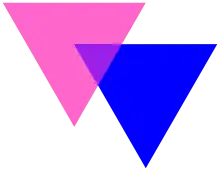 Biangles
Biangles
(represents bisexuality).svg.png.webp)
.svg.png.webp)
.svg.png.webp) Double male symbol
Double male symbol
(represents gay men).svg.png.webp) Interlocking gender symbols
Interlocking gender symbols Interlocking gender symbols
Interlocking gender symbols.svg.png.webp) Four interlocking gender symbols
Four interlocking gender symbols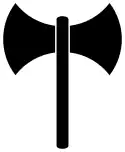
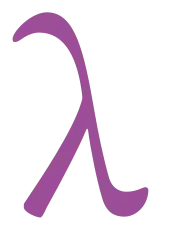 Lambda
Lambda
(represents gay liberation).svg.png.webp) Pansexual symbol[85]
Pansexual symbol[85].svg.png.webp) Androgyne + male + female symbol, the most common transgender symbol
Androgyne + male + female symbol, the most common transgender symbol.svg.png.webp) Pink & blue transgender
Pink & blue transgender
.svg.png.webp) Triskelion
Triskelion Androgyne + male + female symbol identifying unisex / inclusive restroom
Androgyne + male + female symbol identifying unisex / inclusive restroom Male, female and hijra public toilets in India
Male, female and hijra public toilets in India
Simple icons

.svg.png.webp)
.svg.png.webp) sometimes distinguished:
sometimes distinguished:
androgyne (female appearance)[86] sometimes distinguished:
sometimes distinguished:
androgyne (male appearance)[86].svg.png.webp) Asexual[86]
Asexual[86]

 Bisexual (female)
Bisexual (female) Bisexual (male)
Bisexual (male) Bisexual (Whitehead link)[88]
Bisexual (Whitehead link)[88]

 double crescent
double crescent Gay (male) union[86]
Gay (male) union[86].svg.png.webp) Gender-fluid (symbol of fluid quicksilver); sometimes specifically androgyne female; also non-binary[86]
Gender-fluid (symbol of fluid quicksilver); sometimes specifically androgyne female; also non-binary[86].svg.png.webp) Androgyne male[86]
Androgyne male[86] Heterosexual union[86]
Heterosexual union[86] Intergender[86]
Intergender[86] Lesbian union[86]
Lesbian union[86] Neuter (asexual, neutral, neutrois); botany: asexual reproduction; zoology: non-reproducing (e.g. worker bees)[86]
Neuter (asexual, neutral, neutrois); botany: asexual reproduction; zoology: non-reproducing (e.g. worker bees)[86].svg.png.webp) Non-binary[86]
Non-binary[86].svg.png.webp) Non-binary (glyph variant)[86]
Non-binary (glyph variant)[86].svg.png.webp) Non-binary (comet, contrasting with Venus for female and Mars for male)[86]
Non-binary (comet, contrasting with Venus for female and Mars for male)[86].svg.png.webp) Other/undefined gender (transgender, non-binary, gender-fluid)[86]
Other/undefined gender (transgender, non-binary, gender-fluid)[86].svg.png.webp) Pansexual
Pansexual.svg.png.webp) Rotating / fluxuating gender expression[86]
Rotating / fluxuating gender expression[86] Transgender, transsexual, gender-queer;[86] gender inclusive (male, female and androgyne / transgender)[89]
Transgender, transsexual, gender-queer;[86] gender inclusive (male, female and androgyne / transgender)[89]
Flags
Sexual-orientation-based flags
Romantic-attraction-based flags
Gender-identity-based flags

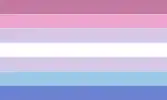 Bigender<ref name='Pride flag bigenderbundle'>* "Bigender Flag – What Does It Represent?". Symbol Sage. August 26, 2020. Archived from the original on June 1, 2021. Retrieved May 28, 2021.
Bigender<ref name='Pride flag bigenderbundle'>* "Bigender Flag – What Does It Represent?". Symbol Sage. August 26, 2020. Archived from the original on June 1, 2021. Retrieved May 28, 2021.

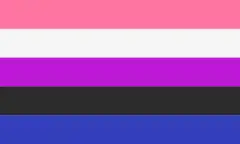

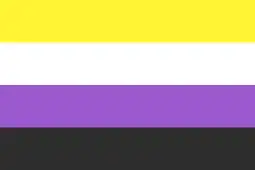


Other flags
Location-based flags
Encoding
| Unicode name[128] | symbol | hex | dec | Associated wording[128] | |
|---|---|---|---|---|---|
| MERCURY | ☿ | U+263F | ☿ | Intersexuality | |
| DOUBLED FEMALE SIGN | ⚢ | U+26A2 | ⚢ | Female homosexuality | |
| DOUBLED MALE SIGN | ⚣ | U+26A3 | ⚣ | Male homosexuality | |
| INTERLOCKED MALE AND FEMALE SIGN | ⚤ | U+26A4 | ⚤ | Heterosexuality | |
| MALE AND FEMALE SIGN | ⚥ | U+26A5 | ⚥ | Intersex, androgynous | |
| MALE WITH STROKE SIGN | ⚦ | U+26A6 | ⚦ | Transgender | |
| MALE WITH STROKE AND MALE AND FEMALE SIGN | ⚧ | U+26A7 | ⚧ | Transgender | |
| VERTICAL MALE WITH STROKE SIGN | ⚨ | U+26A8 | ⚨ | Alchemical symbol for iron | |
| NEUTER | ⚲ | U+26B2 | ⚲ | ||
| MEDIUM WHITE CIRCLE | ⚪︎ | U+26AA | ⚪ | Asexuality, sexless, genderless.[lower-alpha 1] | |
See also
Notes
- Also used as equivalent to U+26AC MEDIUM SMALL WHITE CIRCLE (⚬) Engaged, betrothed (genealogy), wedding ring. Cf. also U+25CB WHITE CIRCLE (○), female in genealogies and pedigrees.
References
- Zimmerman, Bonnie, ed. (2000). "Symbols (by Christy Stevens)". Lesbian Histories and Cultures: An Encyclopedia. Vol. 1 (Encyclopedia of Lesbian and Gay Histories and Cultures) (1st ed.). Garland Publishing. p. 748. ISBN 0-8153-1920-7.
- "Symbols of the Gay, Lesbian, Bisexual, and Transgender Movements". lambda.org. LAMBDA GLBT Community Services. December 26, 2004. Archived from the original on December 30, 2005. Retrieved 22 August 2018.
- "Transgender Symbol". GenderTalk. July 1994.
- "History of Transgender Symbolism". International Transgender Historical Society (ITHS). 2015. Archived from the original on 2021-06-01. Retrieved 2018-11-13.
- Rapp, Linda (2004). "Gay Activists Alliance" (PDF). glbtq.com.
- "1969, The Year of Gay Liberation". The New York Public Library. June 2009. Retrieved 17 November 2018.
- Goodwin, Joseph P. (1989). "It Takes One to Know One". More Man Than You'll Ever Be: Gay Folklore and Acculturation in Middle America. Indiana University Press. p. 26. ISBN 978-0253338938.
- Rapp, Linda (2003). "Symbols" (PDF). glbtq.com.
- Haggerty, George E., ed. (2000). Gay Histories and Cultures: An Encyclopedia (Encyclopedia of Gay Histories and Cultures, Volume II) (1 ed.). London: Garland Publishing. p. 529. ISBN 0-8153-1880-4.
OCLC Number: 750790369
- Stetz, Margaret D. (Winter 2000). Oscar Wilde at the Movies: British Sexual Politics and The Green Carnation (1960) Archived 2016-03-04 at the Wayback Machine; Biography – Volume 23, Number 1, Winter 2000, pp. 90–107. Retrieved 14 June 2010.
- Curiosities of Literature by John Sutherland (2011, ISBN 1-61608-074-4), pp. 73-76.
- Herrero-Brasas, Juan A. (2010). Walt Whitman's Mystical Ethics of Comradeship: Homosexuality and the Marginality of Friendship at the Crossroads of Modernity. SUNY. p. 46. ISBN 978-1-4384-3011-9.
- Kolbeins, Graham (November 8, 2014). "Is 'Bara' Problematic?". Gay Manga!. Retrieved October 8, 2018.
- Ishii, Anne; Kidd, Chip; Kolbeins, Graham, eds. (2014). Massive: Gay Erotic Manga and the Men who Make it. Fantagraphics. ISBN 9781606997857.
- Lewis, Leo; Teeman, Tim (October 12, 2004). "Voice of gay Japan falls silent after 30 years in the pink". The Times. Retrieved September 1, 2009.
- Ito, Bungaku (2006). 『薔薇族』編集長 [The Chief of Barazoku]. Gentosha Outlaw Bunko. pp. 35–37. ISBN 978-4-344-40864-7.
- Kolbeins, Graham (May 20, 2014). "The History of the Term 'Bara' (via Archive)". Gay Manga!. Archived from the original on July 18, 2014. Retrieved October 8, 2018.
- Smith, William (1873). "Eros". Dictionary of Greek and Roman Biography and Mythology. London, UK.
{{cite book}}: CS1 maint: location missing publisher (link) - Conner, Randy P.; Sparks, David Hatfield; Sparks, Mariya (1998). Cassell's Encyclopedia of Queer Myth, Symbol and Spirit. UK: Cassell. p. 133. ISBN 0-304-70423-7.
- Robinson, James M. (2007) [1st publ. 1978]. "On the Origin of the World". The Nag Hammadi Scriptures. HarperCollins. ISBN 9780060523787.
- Géczi, János (2006). "The roses of pederasty – trend toward desanctification" (PDF). The rose in ancient Greek culture. Practice and Theory in Systems of Education.
- Judith M. Barringer, The Hunt in Ancient Greece (Johns Hopkins University Press, 2001), pp. 70–72 online.
- Robert B. Koehl, "The Chieftain Cup and a Minoan Rite of Passage," Journal of Hellenic Studies 106 (1986), pp. 105–107.
- "Gay Symbols Through the Ages". The Alyson Almanac: A Treasury of Information for the Gay and Lesbian Community. Boston, Massachusetts: Alyson Publications. 1989. p. 100. ISBN 0-932870-19-8.
- Myers, JoAnne (2003). Historical Dictionary of the Lesbian Liberation Movement: Still the Rage (1st ed.). Lanham, Maryland: The Scarecrow Press. p. 242. ISBN 978-0810845060. LCCN 2002156624.
- Horak, Laura (2016). "Lesbians Take Center Stage: The Captive (1926-1928)". Girls Will Be Boys: Cross-Dressed Women, Lesbians, and American Cinema, 1908-1934. Rutgers University Press. pp. 143–144. ISBN 978-0-8135-7483-7.
- Collecott, Diana (1999). H.D. and Sapphic Modernism 1910-1950 (1st ed.). Cambridge, England, UK: Cambridge University Press. p. 216. ISBN 0-521-55078-5.
- Fantham, Elaine; Foley, Helene Peet; Kampen, Natalie Boymel; Pomeroy, Sarah B.; Shapiro, H. A. (1994). Women in the Classical World: Image and Text (1st ed.). New York, New York: Oxford University Press. p. 15. ISBN 978-0-19-506727-9.
- Cohen-Stratyner, Barbara (January 14, 2014). "Violets and Vandamm". New York Public Library. Retrieved 4 October 2018.
- Sova, Dawn B. (2004). "The Captive". Banned Plays: Censorship Histories of 125 Stage Dramas (1st ed.). New York, New York: Facts On File. pp. 37–40. ISBN 0-8160-4018-4.
- Maser, Verena (2014-08-31). Beautiful and Innocent: Female Same-Sex Intimacy in the Japanese Yuri Genre (PhD thesis). Universität Trier. pp. 3–4. doi:10.25353/ubtr-xxxx-db7c-6ffc.
- Aoki, Deb (March 11, 2008). "Interview: Erica Friedman". About.com. Archived from the original on March 11, 2008. Retrieved January 11, 2021.
- "Yurizoku no Heya". Barazoku (in Japanese): 66–70. November 1976.
- "What is Yuri?". Yuricon. 28 March 2011. Archived from the original on November 11, 2020. Retrieved January 11, 2021.
- Welker, James (2008). "Lilies of the Margin: Beautiful Boys and Queer Female Identities in Japan". In Fran Martin; Peter Jackson; Audrey Yue (eds.). AsiaPacifQueer: Rethinking Genders and Sexualities. University of Illinois Press. pp. 46–66. ISBN 978-0-252-07507-0.
- "Gl/백합 만화 추천 10작품". 15 February 2021.
- "這畫面太美我不敢看!女女戀不是禁忌,日本「百合展」呈現女孩間的真實愛戀!". 8 April 2019.
- Gray, Arielle (June 3, 2019). "How A Lavender Rhino Became A Symbol Of Gay Resistance In '70s Boston". WBUR-FM. Retrieved December 5, 2019.
- Fisher, Alice (2017-10-15). "Why the unicorn has become the emblem for our times | Alice Fisher". the Guardian. Retrieved 2018-08-19.
- Fisher, Alice (October 15, 2017). "Why the unicorn has become the emblem for our times". The Guardian. Archived from the original on March 23, 2022. Retrieved April 20, 2022.
- Wareham, Jamie (2018-08-17). "Unicorns are the gay, LGBTI and queer icons of our time (and I'm obsessed)". Gay Star News. Archived from the original on 2022-03-02. Retrieved 2022-04-20.
- Milner, Roz (1 February 2022). "How a Stuffed IKEA Shark Became a Trans Icon". INTO. Archived from the original on 2 February 2022. Retrieved 18 July 2022.
- "How the IKEA Shark Became a Trans Icon". newsweek. 23 October 2022. Retrieved 5 April 2023.
- Chasin, CJ DeLuzio (2013). "Reconsidering Asexuality and Its Radical Potential" (PDF). Feminist Studies. 39 (2): 405–426. ISSN 0046-3663.
- Besanvalle, James (31 July 2018). "Here's a handy way to tell if someone you meet is asexual". Gay Star News. Archived from the original on 18 February 2019. Retrieved 18 February 2019.
- "Aromantic Ring?!". March 29, 2015. Retrieved March 11, 2023.
- "All about beautiful ace and aro rings". July 30, 2022. Retrieved March 11, 2023.
- Julie Sondra Decker (2015). The Invisible Orientation: An Introduction to Asexuality. Simon and Schuster. ISBN 9781510700642. Retrieved 21 January 2020.
- "Introduction to Asexual Identities & Resource Guide". campuspride.org. July 28, 2014. Retrieved 2020-10-03.
- "Aromantic flag and symbols explained". 6 June 2020. Retrieved 25 March 2023.
- Van Gelder, Lindsy (1992-06-21). "Thing; Freedom Rings". New York Times. Retrieved 2010-07-21.
- Green, Jonathon (2006). Cassell's Dictionary of Slang. Sterling Publishing Company, Inc. ISBN 0-304-36636-6. Retrieved 2007-11-15.
- Chauncey, George (1994). Gay New York: Gender, Urban Culture, and the Making of the Gay Male World, 1890–1940. New York, New York: Basic Books. p. 52. ISBN 978-0-465-02633-3.
- "Do You Know the Hanky Code?". Gay Desert Guide. May 22, 2018. Retrieved 30 April 2020.
- Kacala, Alexander (April 25, 2019). "The Handkerchief Code, According to 'Bob Damron's Address Book' in 1980". The Saint Foundation. Retrieved 30 April 2020.
- Brigham, Bob (June 17, 2003). "The Man Who Invented the High-Five". SB Nation. Retrieved July 25, 2014.
- Mooallem, Jon (May 22, 2020). "The wild, mysterious history of sports' most enduring gesture: the high five". ESPN. Retrieved April 2, 2021.
- Garcia, Michelle (April 19, 2018). "The Gay History of the High Five". The Advocate. Retrieved March 6, 2017.
- Alwood, Edward (1996). Straight News: Gays, Lesbians, and the News Media. Columbia University Press. p. 94. ISBN 0-231-08436-6. Retrieved January 1, 2008.
-
- Teal, Donn (1971). The Gay Militants: How Gay Liberation Began in America, 1969-1971. New York: St. Martin's Press. pp. 52–58. ISBN 0312112793.
- Gould, Robert E. (24 February 1974). "What We Don't Know About Homosexuality". New York Times Magazine. ISBN 9780231084376. Retrieved January 1, 2008.
- Laurence, Leo E. (October 31 – November 6, 1969). "Gays Penetrate Examiner". Berkeley Tribe. Vol. 1, no. 17. p. 4. Retrieved 7 August 2019.
- ""Gay Power" Politics". GLBTQ, Inc. 30 March 2006. Archived from the original on 10 July 2011. Retrieved January 1, 2008.
- Van Buskirk, Jim (March 20, 2006). "Gay Media Comes of Age". Bay Area Reporter. Vol. 36. p. 13.
-
- Stryker, Susan; Buskirk, Jim Van (November 15–30, 1969). "Friday of the Purple Hand". San Francisco Free Press. ISBN 9780811811873. Retrieved January 1, 2008. (courtesy: the Gay Lesbian Historical Society.
- Martin, Del (December 1969). "The Police Beat: Crime in the Streets" (PDF). Vector (San Francisco). 5 (12): 9. Retrieved 1 June 2019.
- Bell, Arthur (28 March 1974). "Has The Gay Movement Gone Establishment?". The Village Voice. ISBN 9780231084376. Retrieved January 1, 2008.
- Stryker, Susan (2004). "San Francisco". glbtq.com. p. 2. Archived from the original on June 29, 2015. Retrieved July 5, 2015.
- Montanarelli, Lisa; Harrison, Ann (2005). Strange But True San Francisco: Tales of the City by the Bay. Globe Pequot. ISBN 0-7627-3681-X. Retrieved January 1, 2008.
- Alwood, Edward (24 April 1974). "Newspaper Series Surprises Activists". The Advocate. ISBN 9780231084376. Retrieved January 1, 2008.
- Nash, Jay Robert (1993). World Encyclopedia of Organized Crime. Da Capo Press. ISBN 0-306-80535-9.
- "MorEl Eskişehir LGBTT Oluşumu". Moreleskisehir.blogspot.com. Retrieved January 23, 2012.
- "Lapel watch: White ribbon for equality? Knot, really". latimesblogs.latimes.com. 26 February 2009. Retrieved 25 May 2019.
-
- Jere Hester (16 July 2009). "White Knot? Why Not?". nbcnewyork.com. Retrieved 25 May 2019.
- Brooks Barnes (26 November 2008). "Another Cause, Another Ribbon". thecaucus.blogs.nytimes.com. Retrieved 31 May 2019.
- Marc Malkin (7 February 2009). "Foo Fighters' Dave Grohl: White Knot for Gay Marriage". EOnline. Archived from the original on 9 February 2009. Retrieved 31 May 2019.
- Nikki Finke (24 February 2009). "White Knot Oscars And Spirit Awards Lists". Deadline. Archived from the original on 5 December 2018. Retrieved 6 June 2019.
- Adam Markovitz (10 February 2009). "Oscar fashion preview: White knots on the red carpet?". popwatch.ew.com. Archived from the original on 22 February 2009. Retrieved 6 June 2019.
- Rhiza Dizon (20 February 2009). "Expect White Knots on Oscar's Red Carpet". Advocate. Archived from the original on 15 March 2009. Retrieved 6 June 2019.
- Andy Towle (19 November 2008). "Is the White Knot the New Red Ribbon?". Towleroad. Archived from the original on 6 March 2019. Retrieved 6 June 2019.
- "About White Knot". WhiteKnot. Archived from the original on 11 August 2013. Retrieved 6 June 2019.
{{cite web}}: CS1 maint: unfit URL (link) - Plant, Richard (1988). The pink triangle: the Nazi war against homosexuals (revised ed.). H. Holt. p. 175. ISBN 978-0-8050-0600-1.
- "Nazi Persecution of Homosexuals 1933-1945". Ushmm.org. Archived from the original on 2012-01-19. Retrieved 2012-01-23.
- Stier, Oren Baruch (2015). Holocaust Icons: Symbolizing the Shoah in History and Memory. Rutgers University Press. ISBN 9780813574059.
- Elman, R. Amy. "Triangles and Tribulations: The Politics of Nazi Symbols". Remember.org. Retrieved December 10, 2016. (Originally published in the Journal of Homosexuality, 1996, 30 (3): pp.1–11, doi:10.1300/J082v30n03_01, ISSN 0091-8369)
- Cage, Ken; Evans, Moyra (2003-01-01). Gayle: The Language of Kinks and Queens : a History and Dictionary of Gay Language in South Africa. Jacana Media. ISBN 9781919931494.
- "Lesbians and the Third Reich". United States Holocaust Memorial Museum. Retrieved 16 January 2015.
- Huneke, Samuel Clowes (2021). "Heterogeneous Persecution: Lesbianism and the Nazi State". Central European History. 54 (2): 297–325. doi:10.1017/S0008938920000795. ISSN 0008-9389. S2CID 235760995.
- "Rainbow Flag: Origin Story". Gilbert Baker Foundation. 2018. Archived from the original on June 18, 2018. Retrieved 27 September 2021.
- Segerblom, Lynn (March 2, 2018). "The woman behind the Rainbow Flag". Los Angeles Blade. Retrieved 27 September 2021.
- Sobel, Ariel (June 13, 2018). "The Complete Guide to Queer Pride Flags". The Advocate. Archived from the original on February 9, 2019. Retrieved January 6, 2019.
- Koymasky, Matt; Koymasky Andrej (14 August 2006). "Gay Symbols: Other Miscellaneous Symbols". Retrieved 18 February 2007.
- Pea, Georgie (9 August 2013). "LABRYS Tool of Lesbian Feminism". Finding Lesbians. Archived from the original on 12 November 2020. Retrieved 4 August 2018.
- Myers, JoAnne (2003). Historical Dictionary of the Lesbian Liberation Movement: Still the Rage (1st ed.). Lanham, Maryland: The Scarecrow Press. p. 156. ISBN 978-0810845060. LCCN 2002156624.
- Oliva, Gabriela (2020-09-10). "Pansexualidade: entenda o que é essa orientação sexual". O Globo (in Brazilian Portuguese). Retrieved 2022-12-27.
- McElroy, D.R. (2020). Signs & Symbols of the World: Over 1,001 Visual Signs Explained. New York, New York: Wellfleet Press. p. 198. ISBN 978-1577151869.
- Nixon & Düsterhöft (2017) Sex in the Digital Age, p. 150
- See File:Pride in London 2016 - Bisexual people in the parade.png
- Winfield (2019) Gender Identity: The Ultimate Teen Guide, p. 59
- Barron, Victoria (2023). Perfectly Queer: An Illustrated Introduction. Jessica Kingsley Publishers.
- "A Comprehensive Guide to Pride Flags and their Meanings". San Francisco Gay Men's Chorus. April 17, 2023. Archived from the original on April 22, 2023. Retrieved April 22, 2023.
- Wilson, Amee (2023). Queer Chameleon and Friends. Penguin Random House Australia.
- Yuko, Elizabeth (March 13, 2023). "The Meaning Behind 32 LGBTQ Pride Flags". Reader's Digest. Archived from the original on May 17, 2023. Retrieved April 22, 2023.
- Campbell, Andy (2019). Queer X Design: 50 Years of Signs, Symbols, Banners, Logos, and Graphic Art of LGBTQ. Black Dog & Leventhal Publishers. p. 218-221. ISBN 9780762467853.
- The Ace and Aro Advocacy Project (2023). Ace and Aro Journeys. Jessica Kingsley Publishers. pp. 44–45.
- "All about the demisexual flag". LGBTQ Nation. June 30, 2022. Archived from the original on January 8, 2023. Retrieved January 7, 2023.
- Davis, Chloe O. (2021). The Queens' English: The LGBTQIA+ Dictionary of Lingo and Colloquial Phrases. Clarkson Potter. p. 86-87.
- "LGBTQ+ Pride Flags and What They Stand For". Volvo Group. 2021. Archived from the original on August 17, 2021. Retrieved August 17, 2021.
- "Pride Flags". Rainbow Directory. Archived from the original on September 27, 2021. Retrieved September 27, 2021.
- "PRIDE FLAGS". Queer Lexicon (in German). 22 July 2017. Archived from the original on 15 July 2023. Retrieved 16 August 2023.
- Campano, Leah (October 4, 2022). "What Does It Mean to Be Graysexual?". Seventeen. Archived from the original on August 16, 2023. Retrieved April 23, 2023.
- Bendix, Trish (September 8, 2015). "Why don't lesbians have a pride flag of our own?". AfterEllen. Archived from the original on September 9, 2015. Retrieved June 8, 2019.
- Redwood, Soleil (February 26, 2020). "A Horniman Lesbian Flag". Horniman Museum. Archived from the original on August 16, 2023. Retrieved September 20, 2021.
- Andersson, Jasmine (July 4, 2019). "Pride flag guide: what the different flags look like, and what they all mean". i. Archived from the original on August 24, 2019. Retrieved September 15, 2021.
- "LGBTQIA+ Flags and Symbols". Old Dominion University. Archived from the original on June 19, 2021. Retrieved September 27, 2021.
- Murphy-Kasp, Paul (July 6, 2019). "Pride in London: What do all the flags mean?". BBC News. BBC. 00:20. Archived from the original on June 17, 2020. Retrieved July 6, 2019.
- "Omnisexual Meaning | Understand This Sexual Orientation". Dictionary.com. August 7, 2018. Archived from the original on May 13, 2023. Retrieved April 23, 2023.
- Washington-Harmon, Taylyn (November 25, 2022). "What Does It Mean To Be Omnisexual?". Health.com. Archived from the original on April 23, 2023. Retrieved April 23, 2023.
- "Queer Community Flags". Queer Events. September 14, 2018. Archived from the original on April 4, 2023. Retrieved June 4, 2019.
- "Polyamory: What Is It and Why Does the Flag Have the Pi Symbol on It?". Rare. May 4, 2021. Archived from the original on September 27, 2021. Retrieved September 27, 2021.
- Burkett, Eric (December 20, 2022). "LGBTQ Agenda: New polyamorous flag is revealed". The Bay Area Reporter. Archived from the original on April 6, 2023. Retrieved April 22, 2023.
- "New Tricolor Polyamory Pride Flag". November 23, 2022. Archived from the original on November 23, 2022. Retrieved November 27, 2022.
- Brabaw, Kasandra (June 19, 2019). "A Complete Guide To All The LGBTQ+ Flags & What They Mean". Refinery29. Archived from the original on March 12, 2021. Retrieved July 6, 2019.
- ralatalo (September 20, 2021). "Flags of the LGBTIQ Community". OutRight Action International. Archived from the original on October 10, 2021. Retrieved September 27, 2021.
- "31 Queer Pride Flags to Know". The Advocate. Archived from the original on January 8, 2023. Retrieved January 7, 2023.
- "pangender Meaning | Gender & Sexuality". Dictionary.com. July 1, 2019. Archived from the original on April 19, 2023. Retrieved April 23, 2023.
- "Pride Flags". University of Northern Colorado: The Gender and Sexuality Resource Center. Archived from the original on May 28, 2018. Retrieved April 22, 2023.
- "Chicago gay pride parade expels Star of David flags". BBC News. June 26, 2017. Archived from the original on September 27, 2021. Retrieved September 27, 2021.
- Sales, Ben. "The controversy over the DC Dyke March, Jewish Pride flags and Israel, explained". Times of Israel. Archived from the original on September 27, 2021. Retrieved September 27, 2021.
- Owens, Ernest (June 8, 2017). "Philly's Pride Flag to Get Two New Stripes: Black and Brown". Philadelphia. Archived from the original on May 24, 2019. Retrieved May 26, 2019.
- Deane, Ben (June 12, 2021). "The Philly Pride flag, explained". The Philadelphia Inquirer. Archived from the original on April 23, 2023. Retrieved April 23, 2023.
- Grange, Helen (January 31, 2011). "Coming out is risky business". Independent Online. Archived from the original on March 22, 2021. Retrieved July 4, 2019.
- Knowles, Katherine (July 21, 2006). "God save the queers". PinkNews. Archived from the original on October 14, 2006. Retrieved May 17, 2021.
- "Canada Pride Flag". Default Store View. Archived from the original on November 29, 2021. Retrieved November 29, 2021.
- "Pride parades in Poland prove flashpoint ahead of general election". Reuters. Archived from the original on July 4, 2023. Retrieved July 4, 2023.
- "Polish LGBT people could be prosecuted for 'desecrating a national symbol'". Pink News. July 9, 2018. Archived from the original on July 4, 2023. Retrieved July 4, 2023.
- "Pride Parade, Trans Pride take place in Belgrade". European Western Balkans. 2015-09-20. Archived from the original on 2023-03-27. Retrieved 2023-08-04.
- "Miscellaneous Symbols | Gender symbols" (PDF). Unicode Consortium. Retrieved 2020-06-28.
External links
- LGBTQIA+ Glossary Archived 2021-12-18 at the Wayback Machine at Old Dominion University








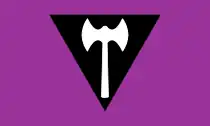
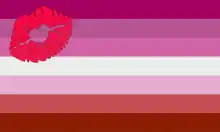

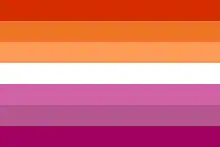


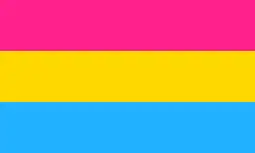




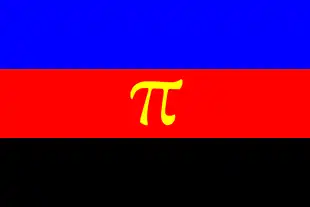

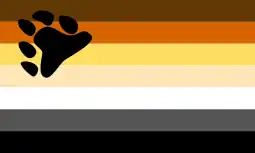

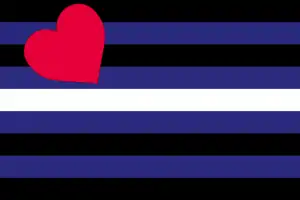
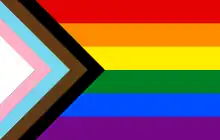



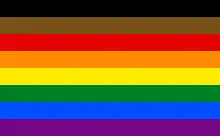
![South Africa Gay pride flag of South Africa[additional citation(s) needed]](../I/Gay_Flag_of_South_Africa.svg.png.webp)
![United Kingdom Pink Union Jack[additional citation(s) needed]](../I/Gay_Pride_flag_of_the_United_Kingdom.svg.png.webp)
![Canada Canadian Pride Flag[additional citation(s) needed]](../I/Canada_Pride_flag.svg.png.webp)

